ID-DOC: general search
Here you can enter a general keyword and perform a general search.
??? What are these question marks doing here? These represent tools which we know by a Dutch or French name, but who's English name is yet unknown. Suggestions are always welcome!
If you cannot find a certain tool, or if you experience other problems with this page, please let us know at info@mot.be.
Search for: tool
Showing search results 101 - 150
1,492 results found
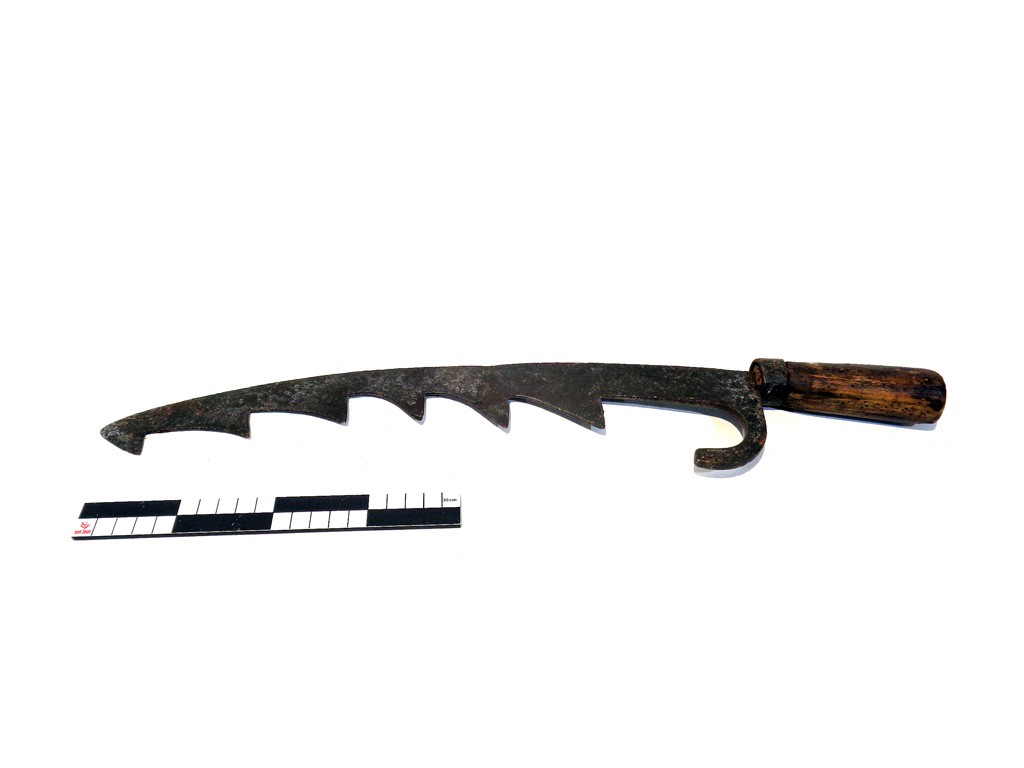
???
This text can only be consulted in Dutch
<https://www.mot.be/resource/Tool/356?lang=nl>
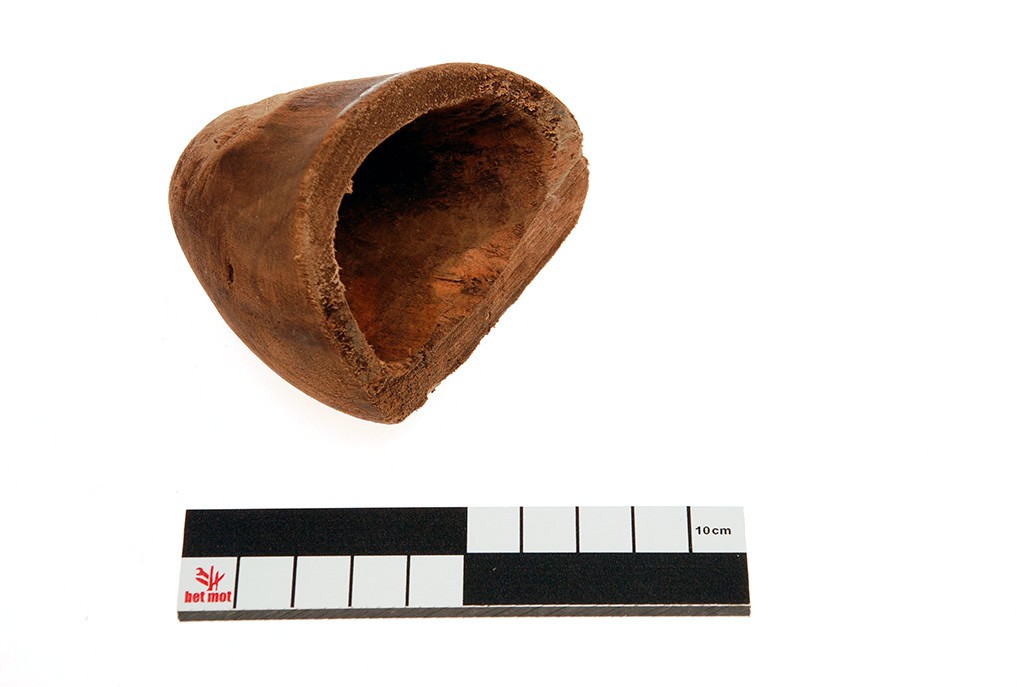
???
This text can only be consulted in Dutch
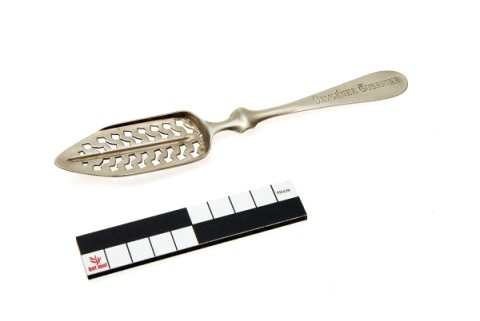
Absinth spoon
Spoon made of silver-plated, tin-plated or nickel-plated metal - approx. 15
to 18 cm long - with holes used to sweeten absinthe. In the spoon - which
is placed horizontally on a glass of absinthe - some sugar is placed and
sprinkled with water. Another model is a spoon without holes, the handle of
which is interrupted by a surface with holes. After the absinthe has been
sugared, you can stir it with a spoon. [MOT]
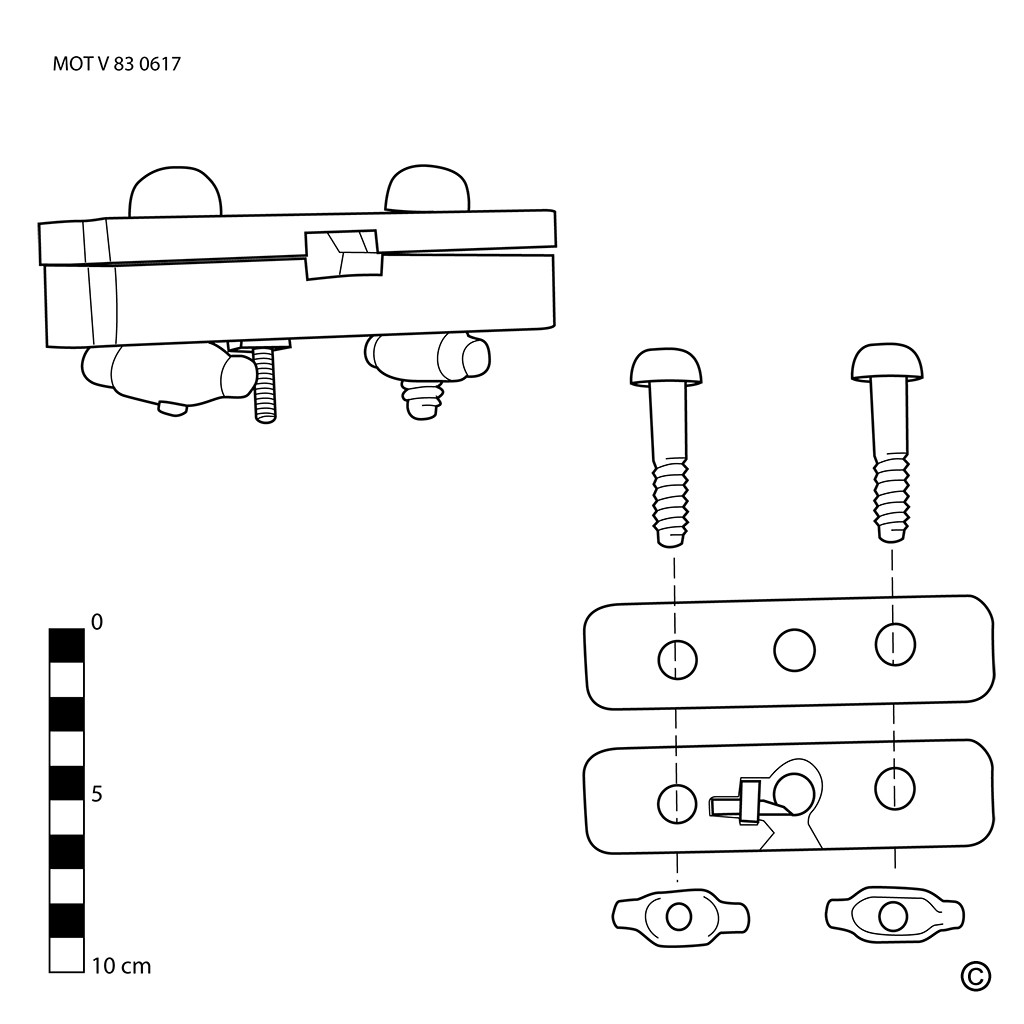
Adjustable die
This text can only be consulted in Dutch
<https://www.mot.be/resource/Tool/adjustable-die?lang=nl>
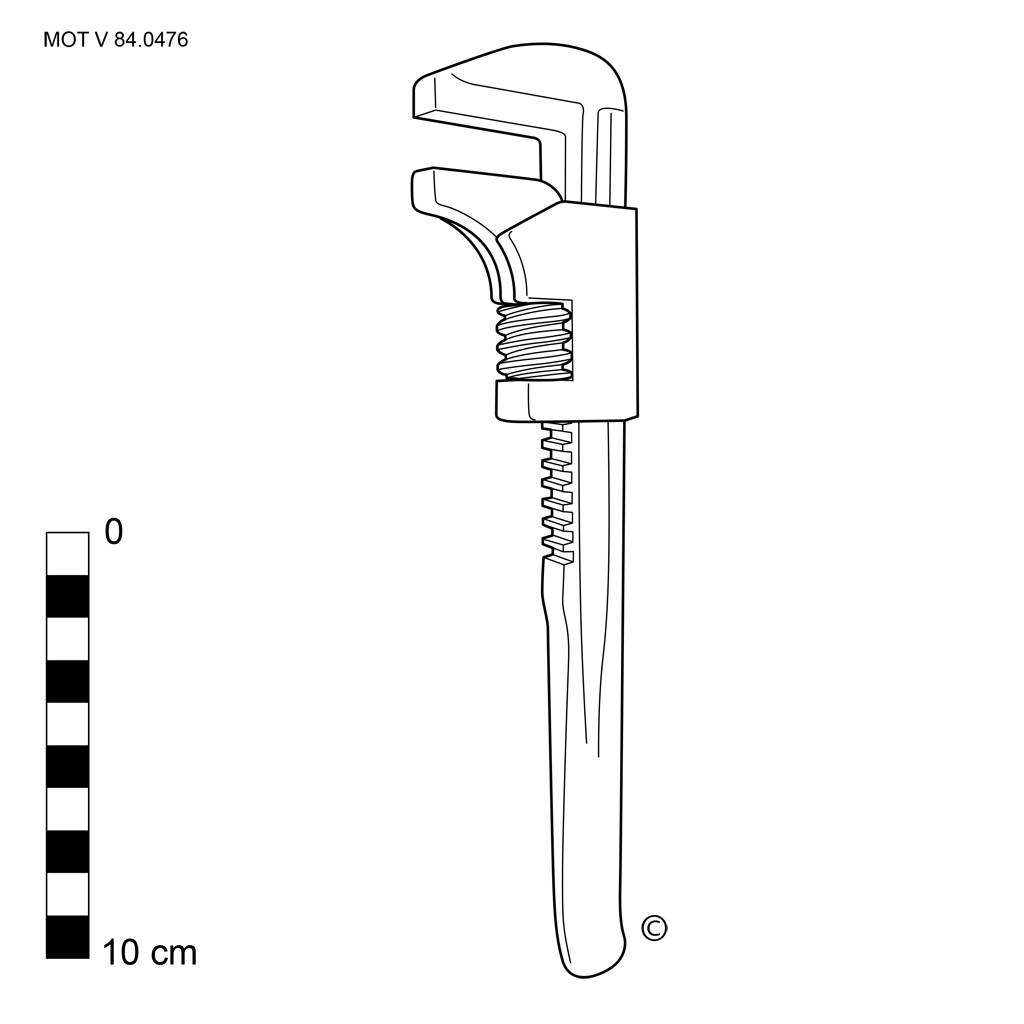
Adjustable spanner
This text can only be consulted in Dutch
<https://www.mot.be/resource/Tool/adjustable-spanner?lang=nl>
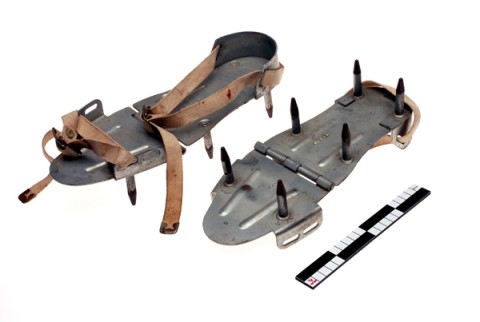
Aerator shoe
You can aerate a small lawn while walking by using these aerator shoes. It
consists of iron or plastic soles under which iron nails (approx. 5 cm) are
attached. You attach the soles under your shoes. Other means to aerate the
lawn are a spike or a lawn aerator (roller). [MOT]
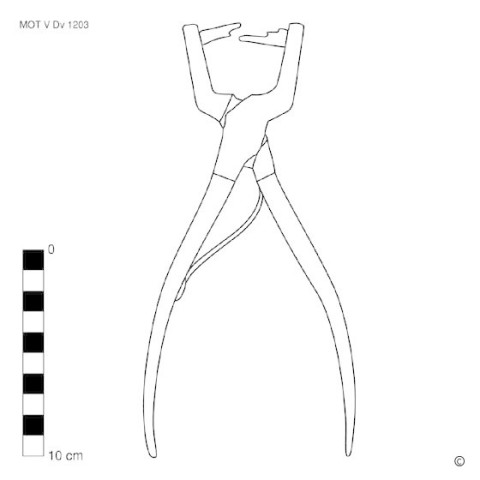
Aglet pliers
The shoemaker fixes the aglet on shoelaces with these pliers. He places
this iron band on the lace to prevent it from fraying and to make it easier
to thread. The jaws are slightly hollowed out for the curve of the
aglet.See also the lace-tag fitter. [MOT]
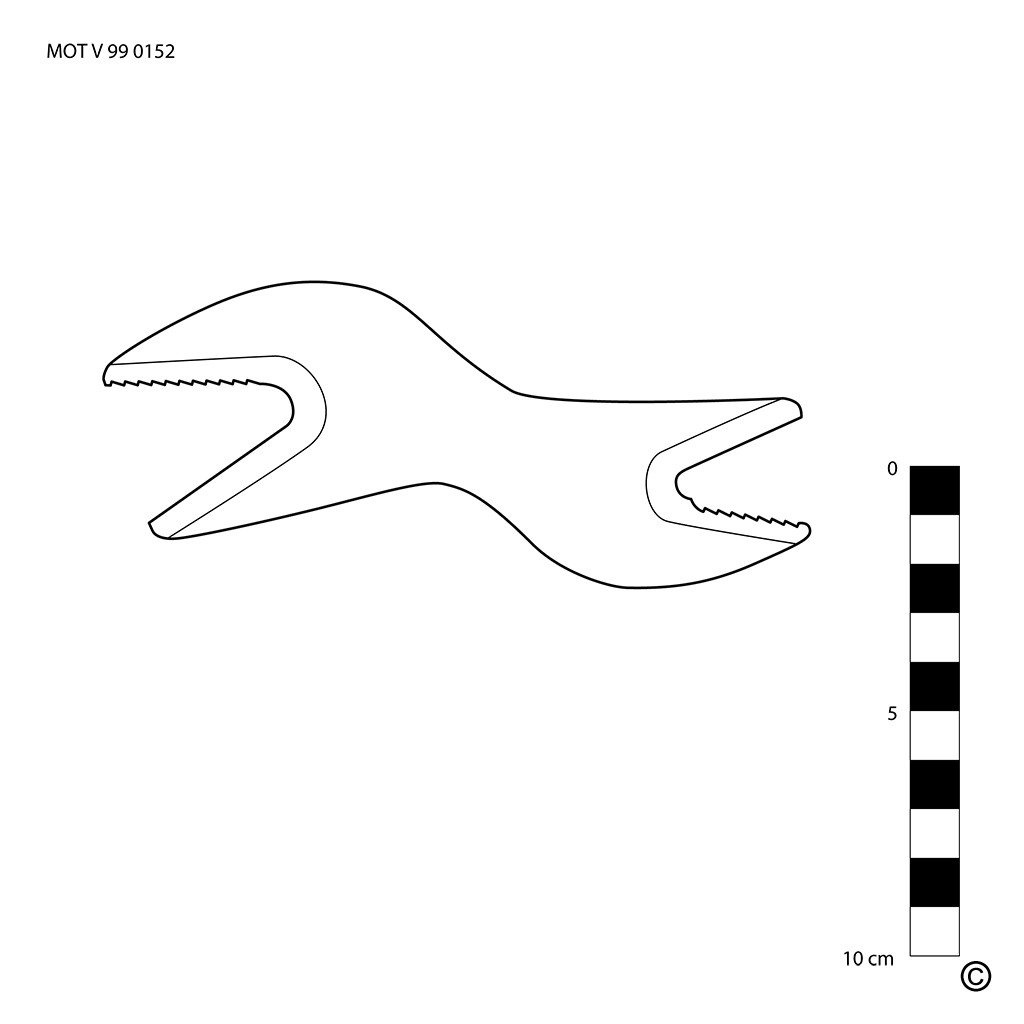
Alligator wrench
This text can only be consulted in Dutch
<https://www.mot.be/resource/Tool/alligator-wrench?lang=nl>
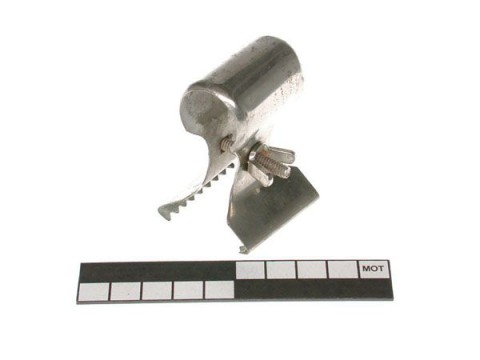
Alum stone clip
If you want to rub the skin with alum after shaving, you can clamp the alum
stone in a special clip. It has a jaw with a right-angled edge with
triangular teeth, which is adjustable by means of a screw. [MOT]
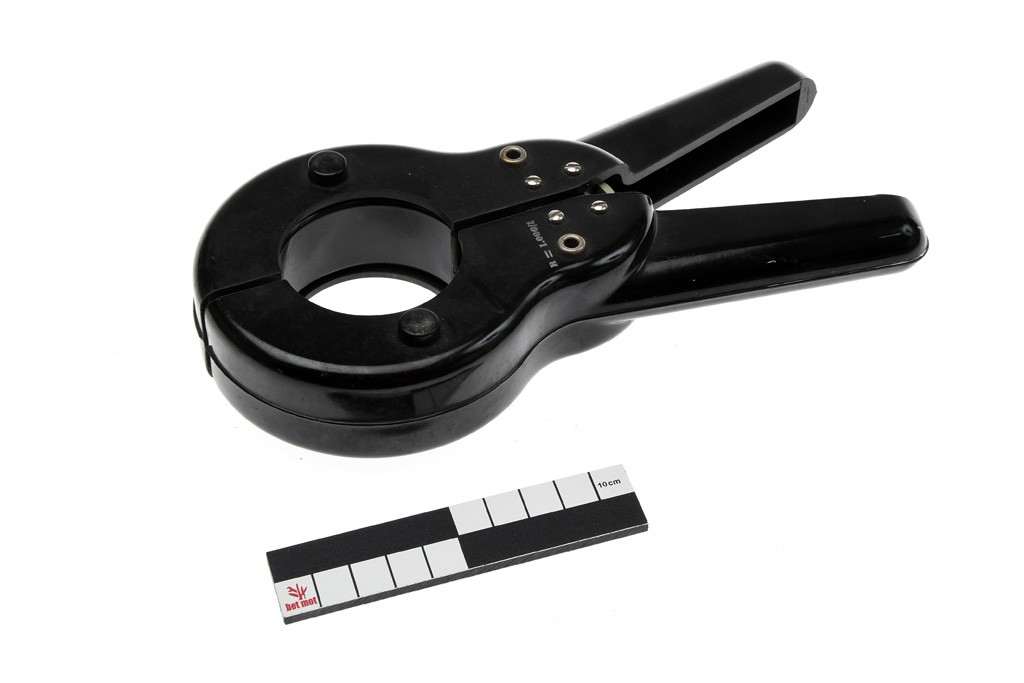
Ampere clamp meter
This text can only be consulted in Dutch
<https://www.mot.be/resource/Tool/ampere-clamp-meter?lang=nl>
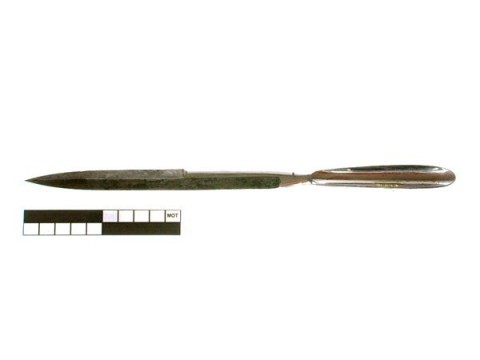
Amputating knife
The amputating knife is a large straight knife with a narrow elongated
blade (17 to 23 cm long) that cuts on one or both sides. The width of the
blade varies between 2 and 3 cm. Today, the one-piece amputating knife uses
chromed steel or stainless steel. Before the 19th century the handle was
often made of ebony or ivory and the blade made of steel. The cutting blade
usually ends in a sharp dagger point, i.e. a point in the longitudinal axis
of the blade, or in a rounded cutting end. The surgeon uses this knife to
amputate part or all of limbs. The knife easily cuts through the skin,
muscles and tendons. The amputating knife is usually used in conjunction
with the amputating saw. [MOT]
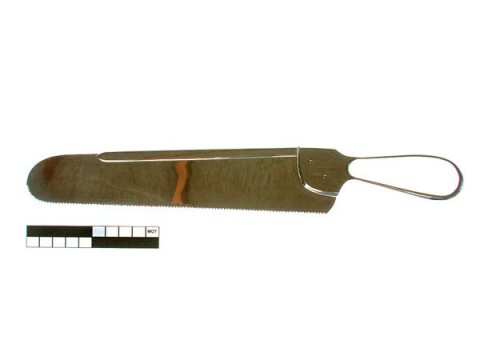
Amputating saw
Fine saw made of steel, chromed steel or stainless steel, used by the
surgeon to cut off or amputate a part of the body. In one model handle and
blade consist of one whole. Then the straight saw blade is about 12 cm long
and gradually tapers to a pointed end. This amputating saw has a double
saw-shaped cut with very fine, sharp tips. Another model amputating saw has
a loose, replaceable saw blade about 10 to 33 cm long that is stretched in
a metal arc and equipped with a straight handle or a pistol butt. Finally,
there is also an amputating saw in the form of a handsaw with a blade
approx. 22 to 33 cm long and 4 to 10 cm wide. The blade, which is pointed
or rounded, has teeth along its entire length on one side. The amputating
saw cuts through the bone and is used together with the amputating knife.
See also the Gigli saw. [MOT]
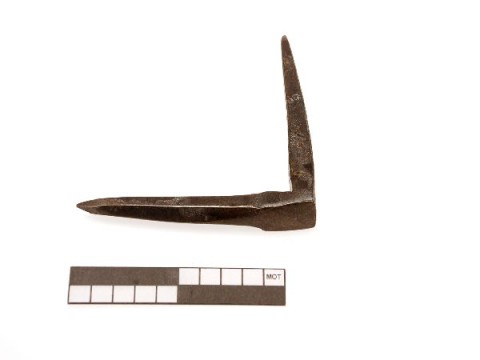
Angular reamer
This text can only be consulted in Dutch
<https://www.mot.be/resource/Tool/angular-reamer?lang=nl>
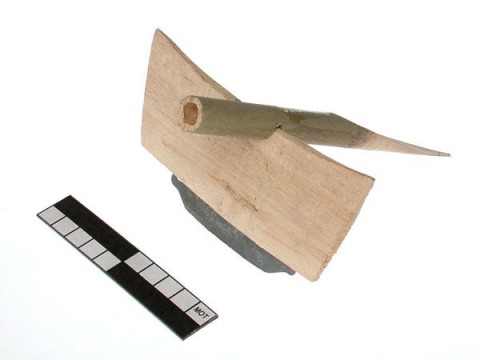
Ani-ani
This rice knife is an extremely light (approx. 20-60 gr) knife with which
women in Indonesia harvest rice. It has a small (approx. 5-7 cm by 1-2 cm)
and very light (max. 5 gr), slightly convex blade, set in a bamboo handle
at the top. Transverse to the top of the handle a bamboo stick - sometimes
pointed on one side - is placed, which is held in the handle; this makes
the knife more comfortable in the hand. Because you have to harvest ear by
ear with this knife, it is possible to select the ripe ears in the same
field and leave the others standing for a while. [MOT]
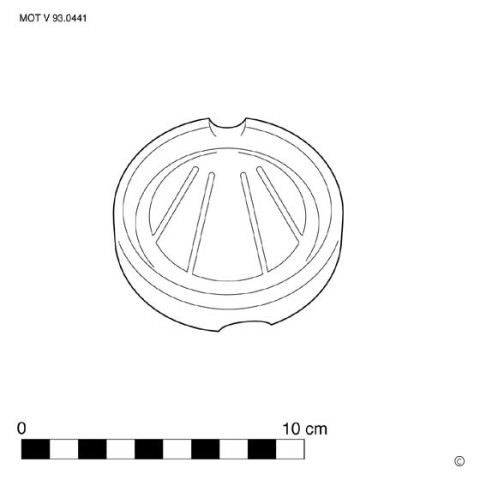
Anti-boil device
This text can only be consulted in Dutch
<https://www.mot.be/resource/Tool/anti-boil-device?lang=nl>
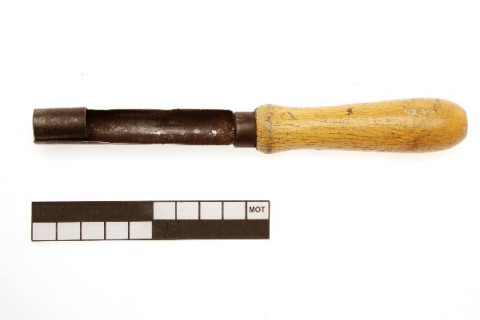
Apple corer
This text can only be consulted in Dutch
<https://www.mot.be/resource/Tool/apple-corer?lang=nl>
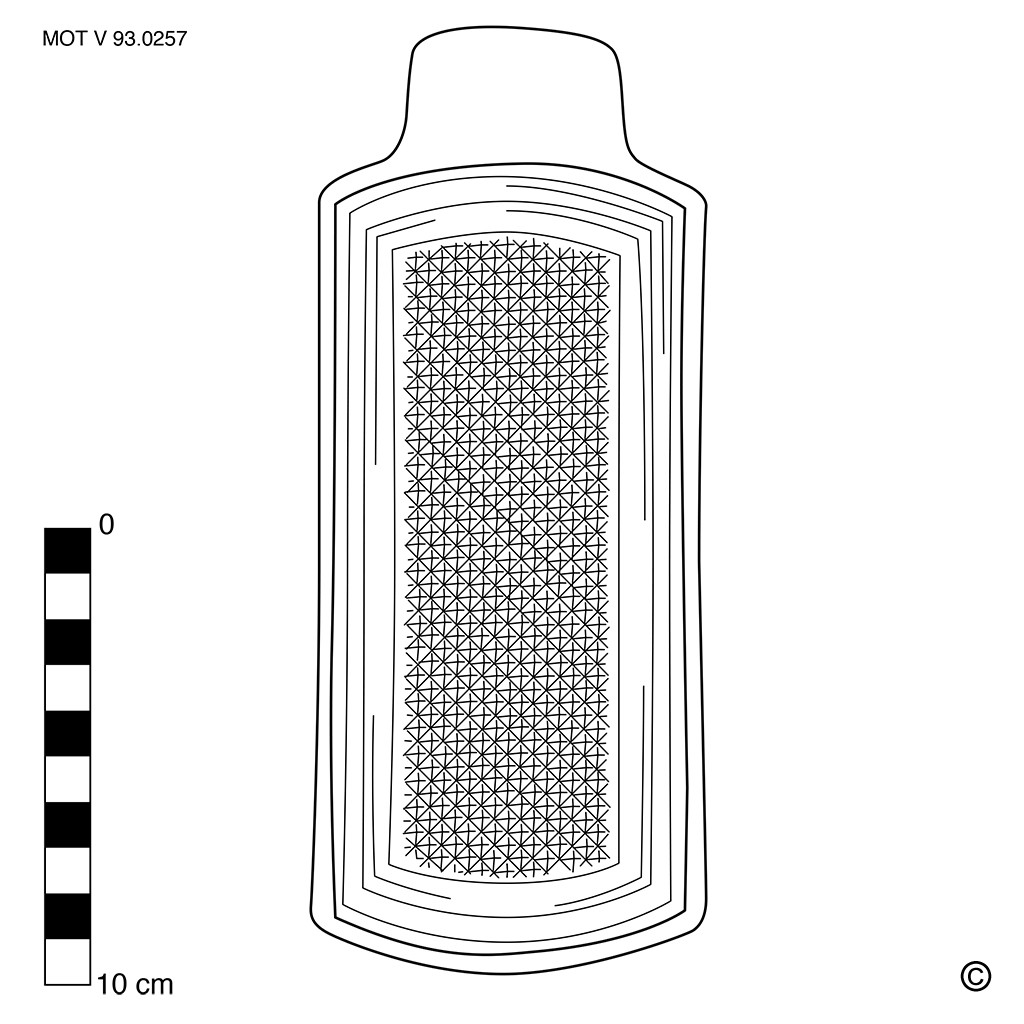
Apple grater
Glass or ceramic oblong (approx. 20 cm by 10 cm) dish with studs in the
shape of four-sided pyramids at the bottom. You can grate an apple on it to
make fruit porridge. You can also use an ordinary kitchen grater. [MOT]
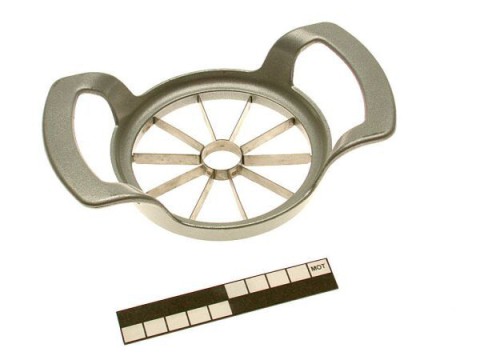
Apple slicer
A kitchen utensil to core an apple and divide it into wedges at the same
time. The blades (8 to 14) are positioned like spokes in a wheel (approx.
10 cm in diameter), with the drill as the hub. The circular, aluminum frame
has two handles. The apple slicer is placed on top of an apple and pushed
down. See also the pineapple wedger. [MOT]
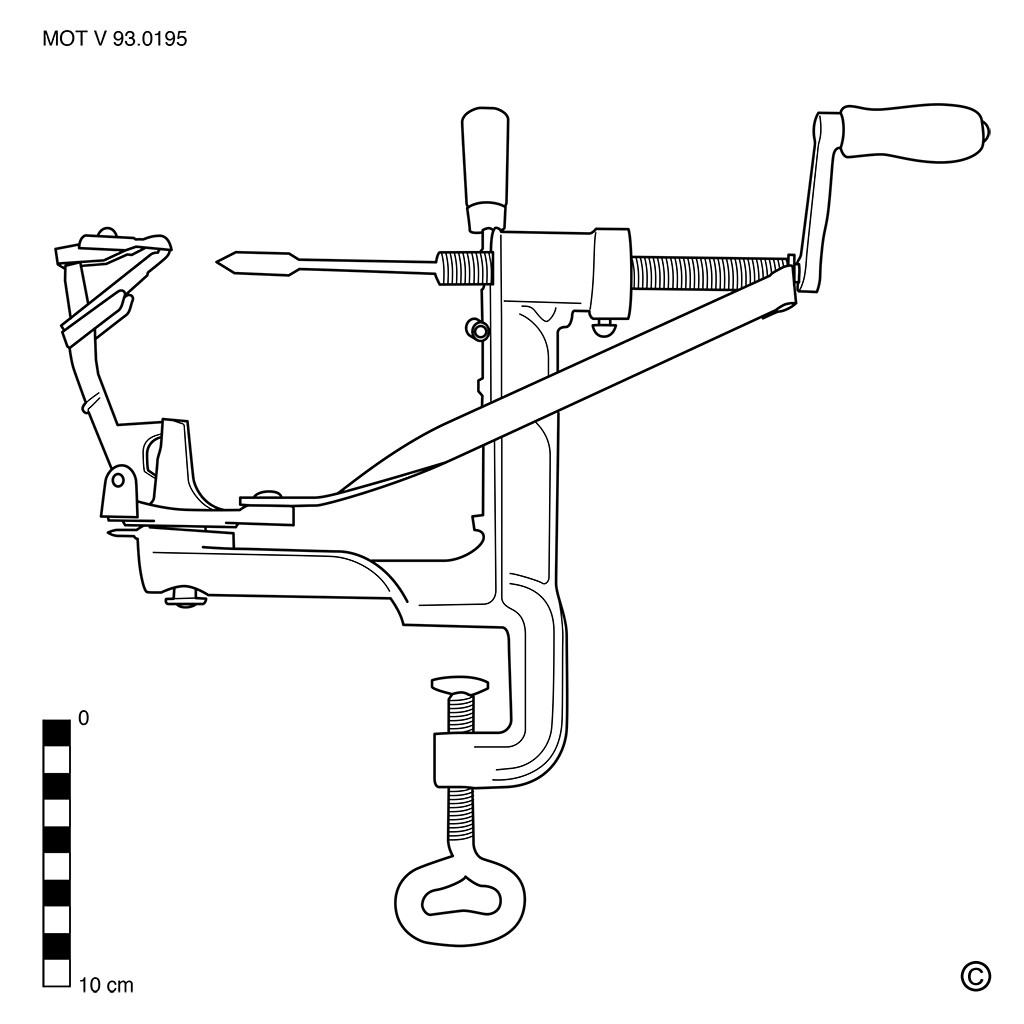
Apple-/potato peeler
This text can only be consulted in Dutch
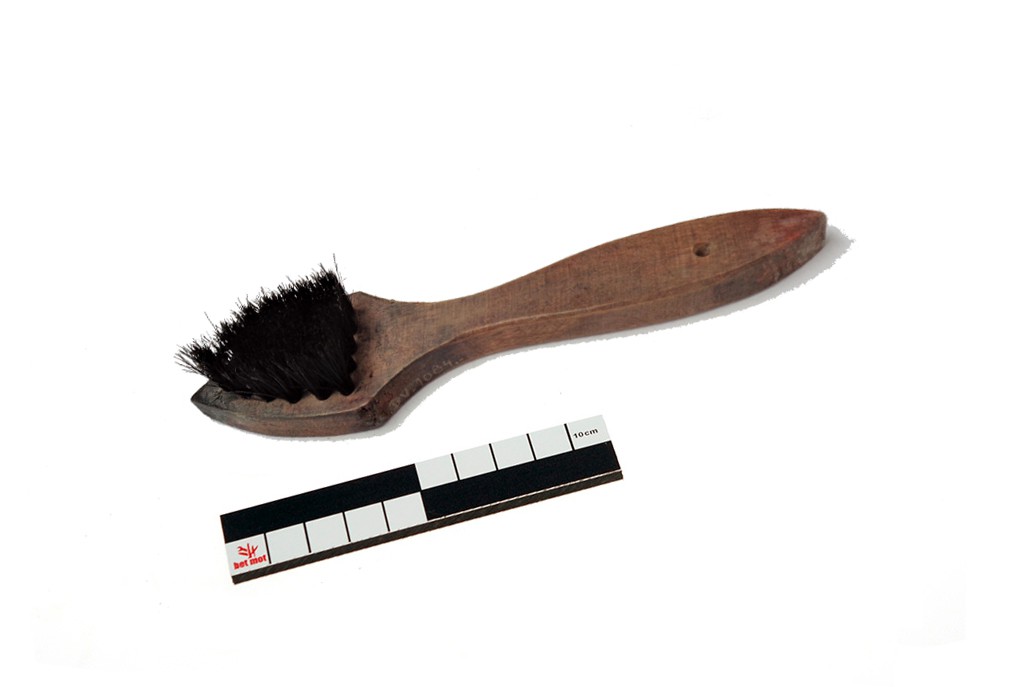
Applicator brush
This text can only be consulted in Dutch
<https://www.mot.be/resource/Tool/applicator-brush?lang=nl>
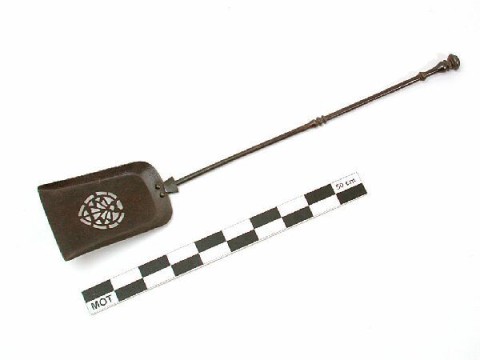
Ash shovel
This text can only be consulted in Dutch
<https://www.mot.be/resource/Tool/ash-shovel?lang=nl>
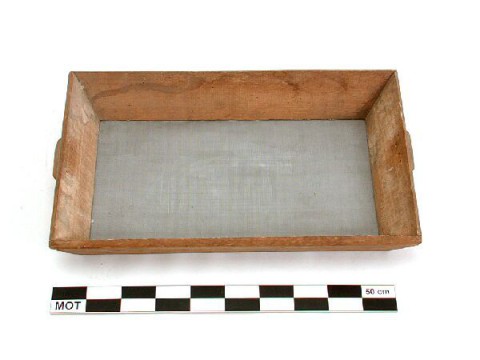
Ash sieve
This text can only be consulted in Dutch
<https://www.mot.be/resource/Tool/660?lang=nl>
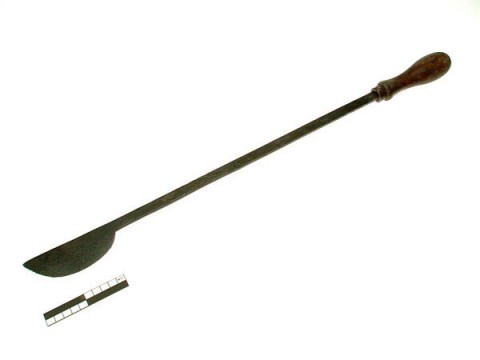
Asparagus cutter
White asparagus (Asparagus Officinalis Liliaceae, variety Ultilis) are
harvested with an asparagus gouge or an asparagus cutter (approx. 60-70 cm
long). The latter has a flat leaf that extends towards the end, a leaf with
a bent - possibly toothed - tip or a semicircular leaf (approx. 10-12 cm
long), which is attached with a long (approx. 40 cm) tang in a wooden
handle; the point is sometimes knotted. Asparagus is grown on high beds and
is harvested just before the foliage comes to the surface, as when the head
is exposed to light it quickly turns blue or green. With an asparagus gouge
or knife it is possible to cut the stem close to the rhizome, without
damaging these or not yet fully grown neighboring stems. See also the weed
digger. [MOT]
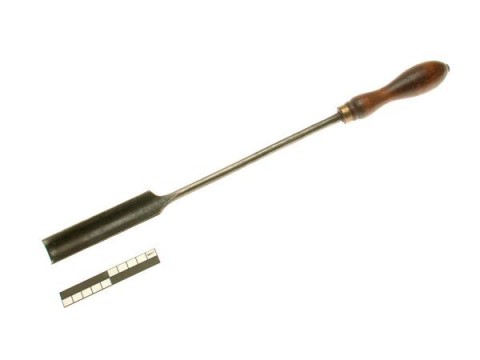
Asparagus gouge
White asparagus can be harvested with an asparagus cutter or an asparagus
gouge. The latter has a gouge-shaped (approx. 3 cm wide; approx. 10-15 cm
long) blade that is attached to a wooden handle with a long (approx. 20 cm)
tang. White asparagus is grown on high beds and harvested just before the
foliage comes to the surface, because when the head is exposed to light, it
quickly turns blue or green. With an asparagus gouge or knife it is
possible to cut the stem as close to the rhizome as possible, without
damaging these or not yet fully grown, neighboring stems. [MOT]
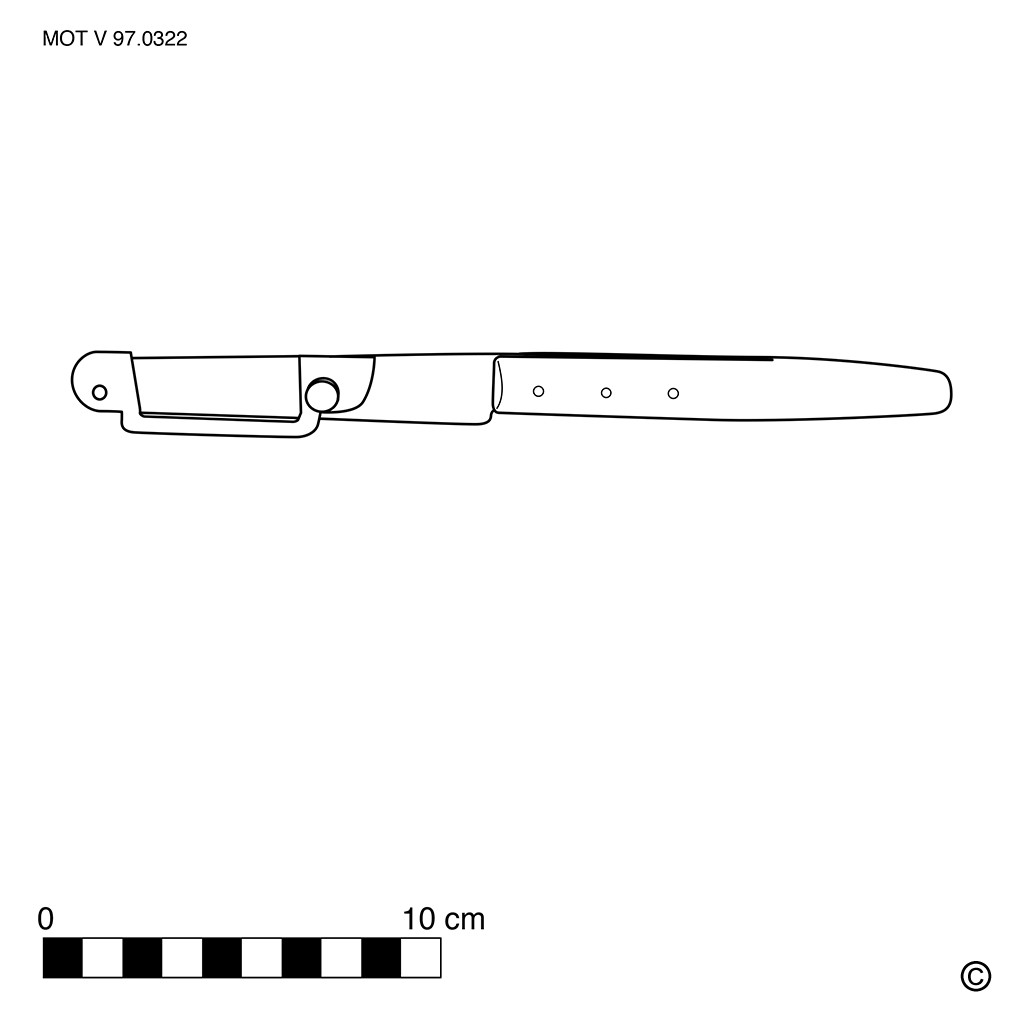
Asparagus peeler
This text can only be consulted in Dutch
<https://www.mot.be/resource/Tool/asparagus-peeler?lang=nl>
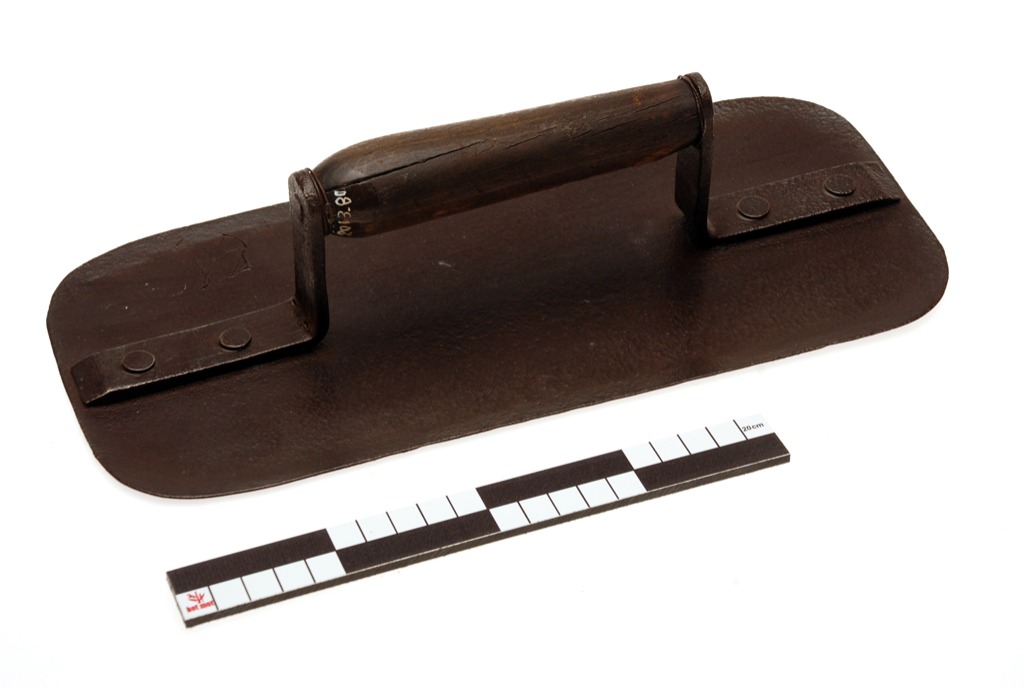
Asparagus trowel
This text can only be consulted in Dutch
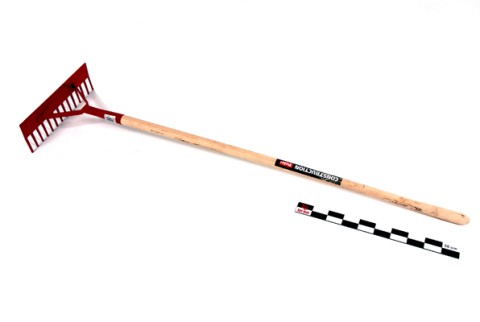
Asphalt rake
This text can only be consulted in Dutch
<https://www.mot.be/resource/Tool/asphalt-rake?lang=nl>
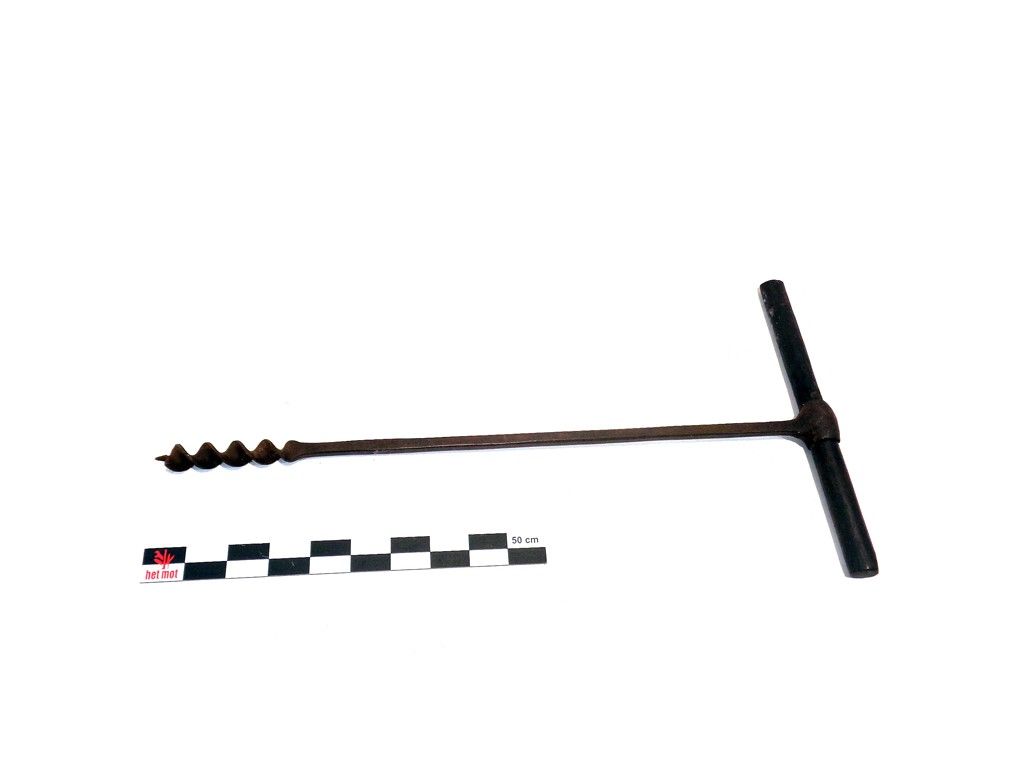
Auger
The auger is a hand tool for drilling holes, consisting of a crank and a
drill or bit. The 20 to 50 cm long handle (see nave borer and pump rip bit)
is made of wood, sometimes metal. The auger is used by many woodworkers;
hence the variety in names. See also the breast auger, gimlet, bell drill,
bung borer, cooper's bung borer, clog maker's drill, first bit.
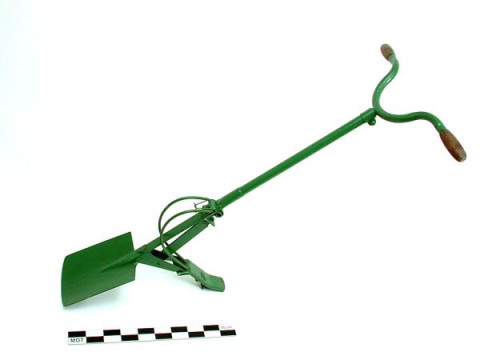
Automatic spade
This text can only be consulted in Dutch
<https://www.mot.be/resource/Tool/automatic-spade?lang=nl>
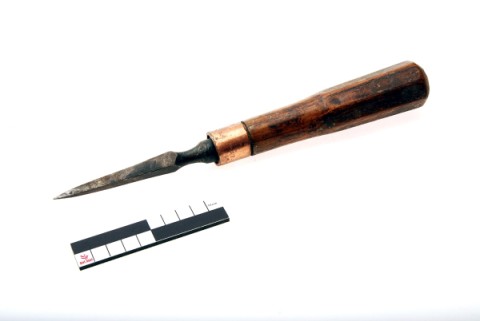
Awl
Hand tool for punching holes in wood (1). It is a round or square,
sometimes triangular metal tip of approx. 5-20 cm, which sticks into a
wooden or plastic handle of approx. 10-15 cm. The Japanese awl (Japanese:
tatsupu horuda) is cone-shaped and resembles the marlingspike. It is about
14 cm long and about 2.5 cm thick and has a wooden handle. In theory, the
awl is not struck, except by hand. It is only used to make small and
shallow holes, eg for screws. Not infrequently it replaces the scribing
point. The basketmaker uses a similar awl, but with a blunt point (see
basketmaker's awl). [MOT] (1) To punch holes in leather, the leatherworker
uses a shoemaker's awl.
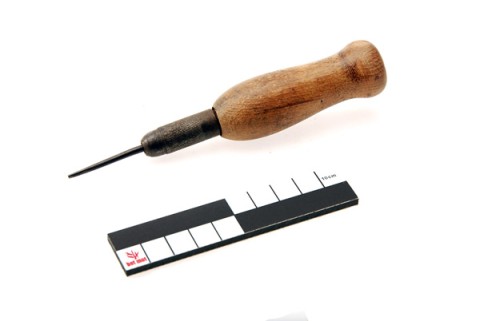
Awl (shoemaker)
This awl is used by leather workers to sew small holes in leather. It is a
thin steel awl with a round or triangular cross section. It can be straight
or curved. Some models have replaceable needles that can be stored in the
handle. See also saddler's wheel pricker and shoemaker's wheel pricker.
[MOT]
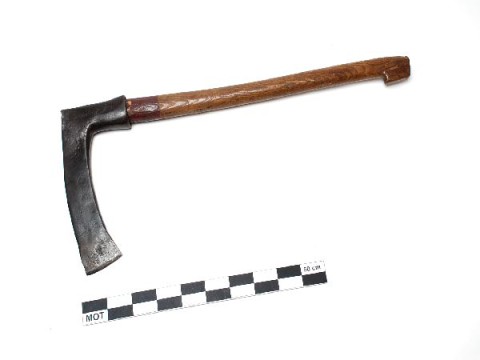
Axe (felling)
This text can only be consulted in Dutch
<https://www.mot.be/resource/Tool/axe-felling?lang=nl>
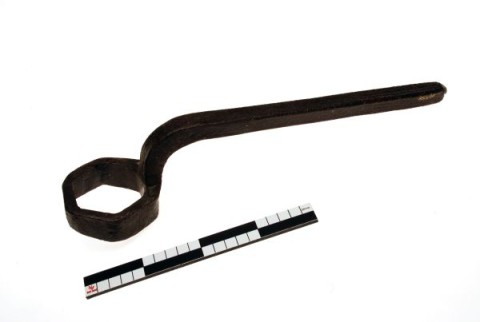
Axle key
This text can only be consulted in Dutch
<https://www.mot.be/resource/Tool/axle-key?lang=nl>
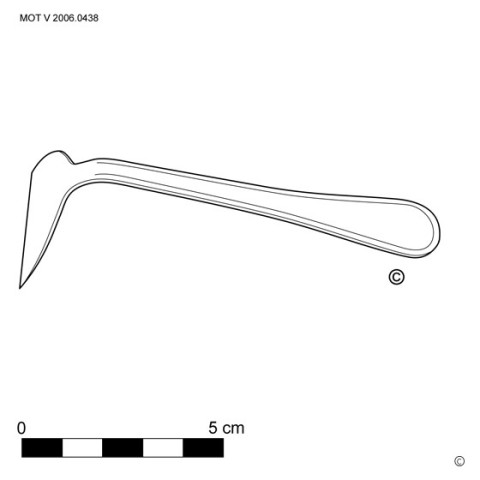
Baby food pusher
This text can only be consulted in Dutch
<https://www.mot.be/resource/Tool/baby-food-pusher?lang=nl>
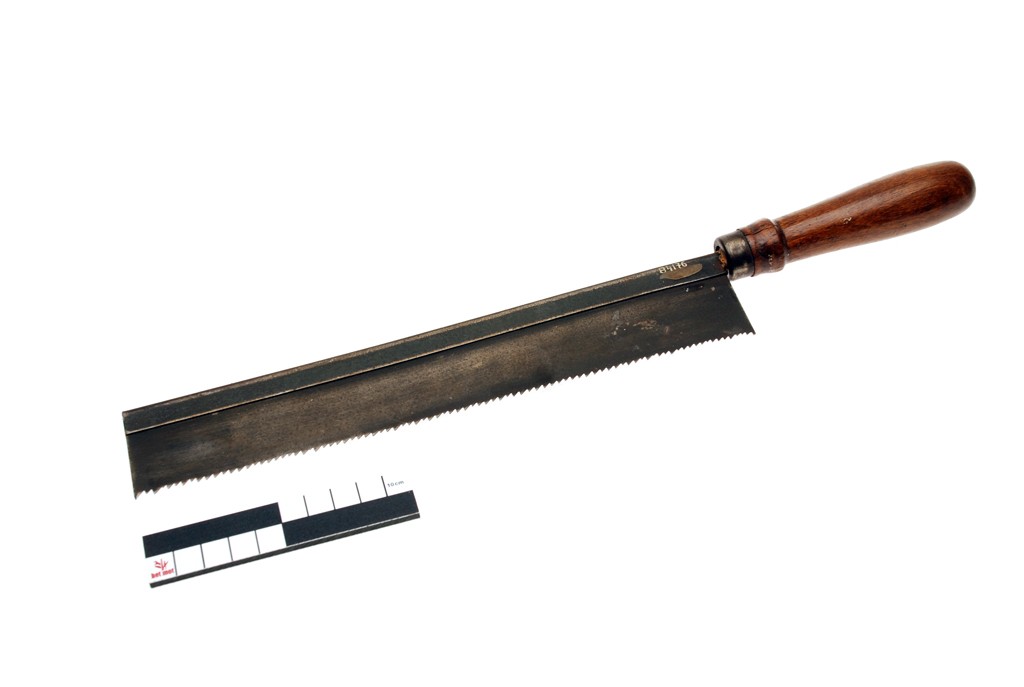
Back saw
This text can only be consulted in Dutch
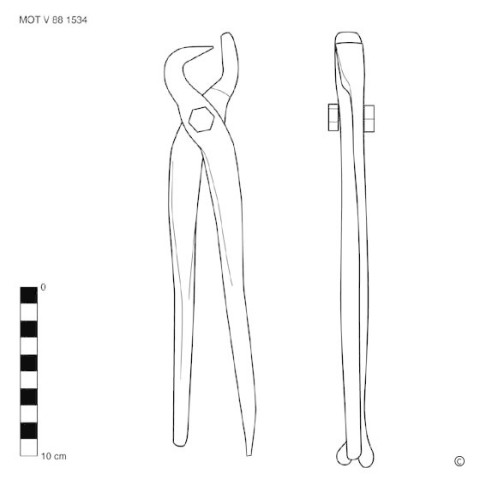
Bag-frame plier
This text can only be consulted in Dutch
<https://www.mot.be/resource/Tool/bag-frame-plier?lang=nl>
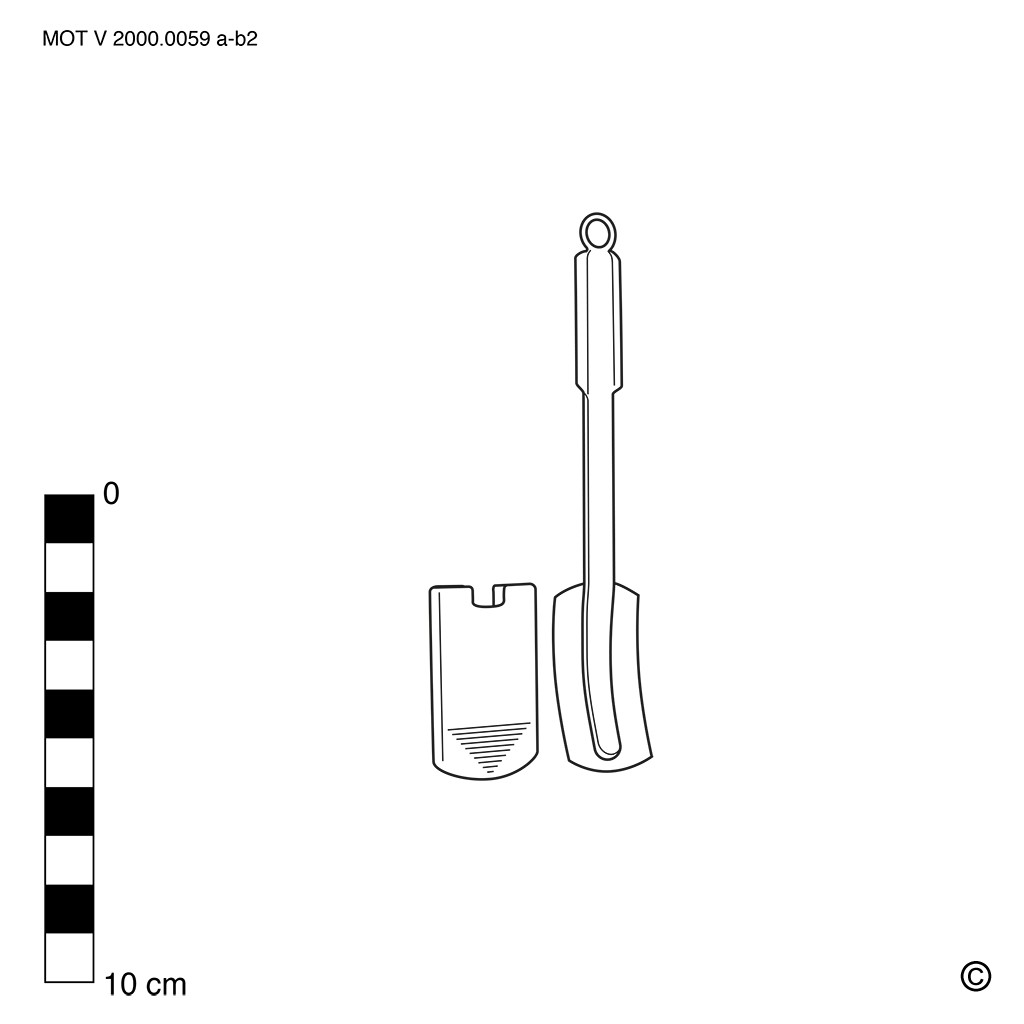
Baker blade
This text can only be consulted in Dutch
<https://www.mot.be/resource/Tool/baker-blade?lang=nl>
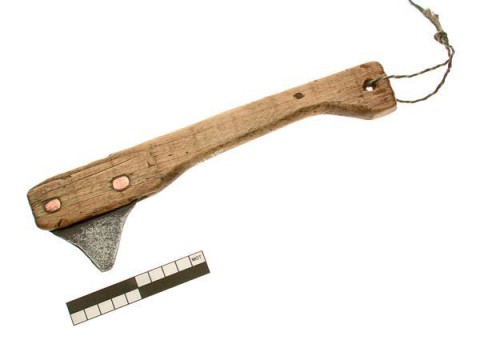
Bale tie cutter
Hand tool to cut the tensioned twine bands that bind the pressed straw or
hay bale by lightly touching it and pulling the tool towards you. The bale
tie cutter consists of a triangular blade - often a cutter bar tooth - that
sticks into a wooden handle. For the same purpose, other knives, foldable
or not, such as the pruning knife, are used. See also the sheaf-knife.
[MOT]
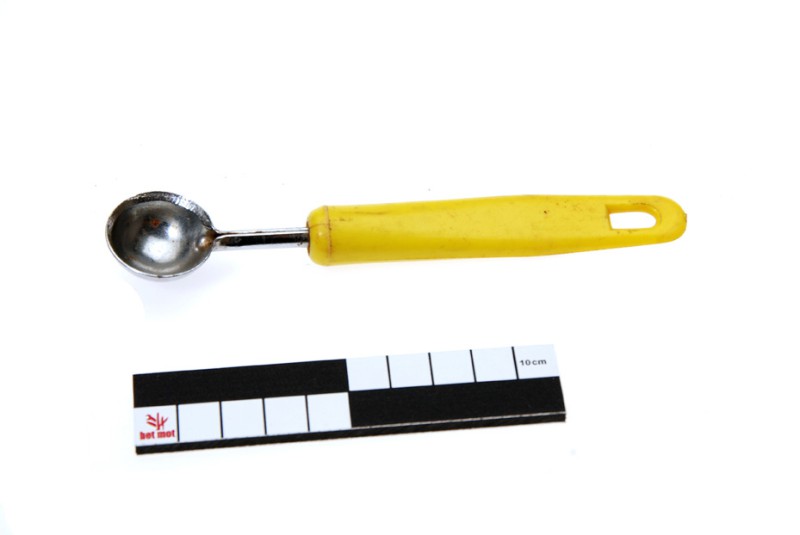
Ball cutter
Kitchen utensil with a metal hemisphere (approx. 0.5-3 cm) on one or both
ends of a straight handle. With the ball cutter you can turn balls from
potatoes, melon, root vegetables, butter, apples and cheese and remove
cores from half apples or pears. Often it is combined with other kitchen
utensils such as a butter cutter (1). It can be distinguished from the ice
cream scoop and from the comedo extractor. See also the bottleopener. [MOT]
(1) Eg. BRIDGE & TIBBETTS: 43.
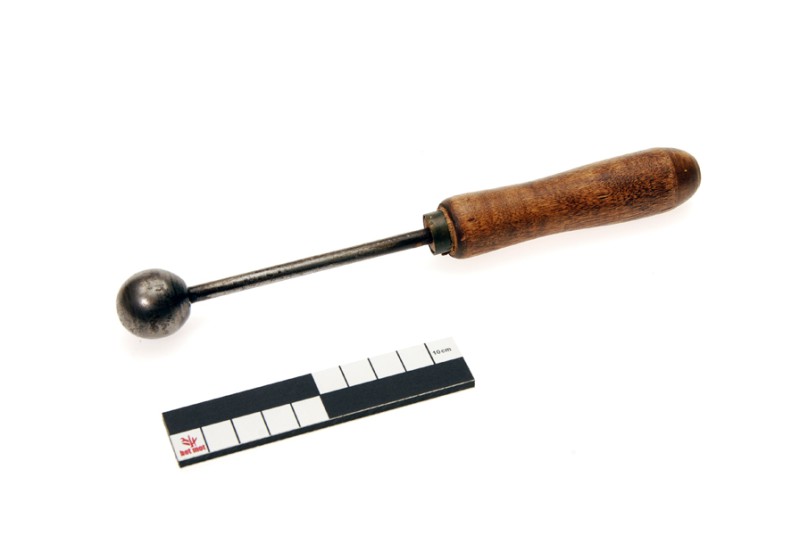
Ball iron (hand)
Shoemakers use the ball iron and egg iron (hand) to apply pressure to the
inside of a shoe when something needs to be glued there. The ball iron
should not be confused with the training fighting knife and the embossing
tool. See also ball iron and egg iron on a stand. [MOT]
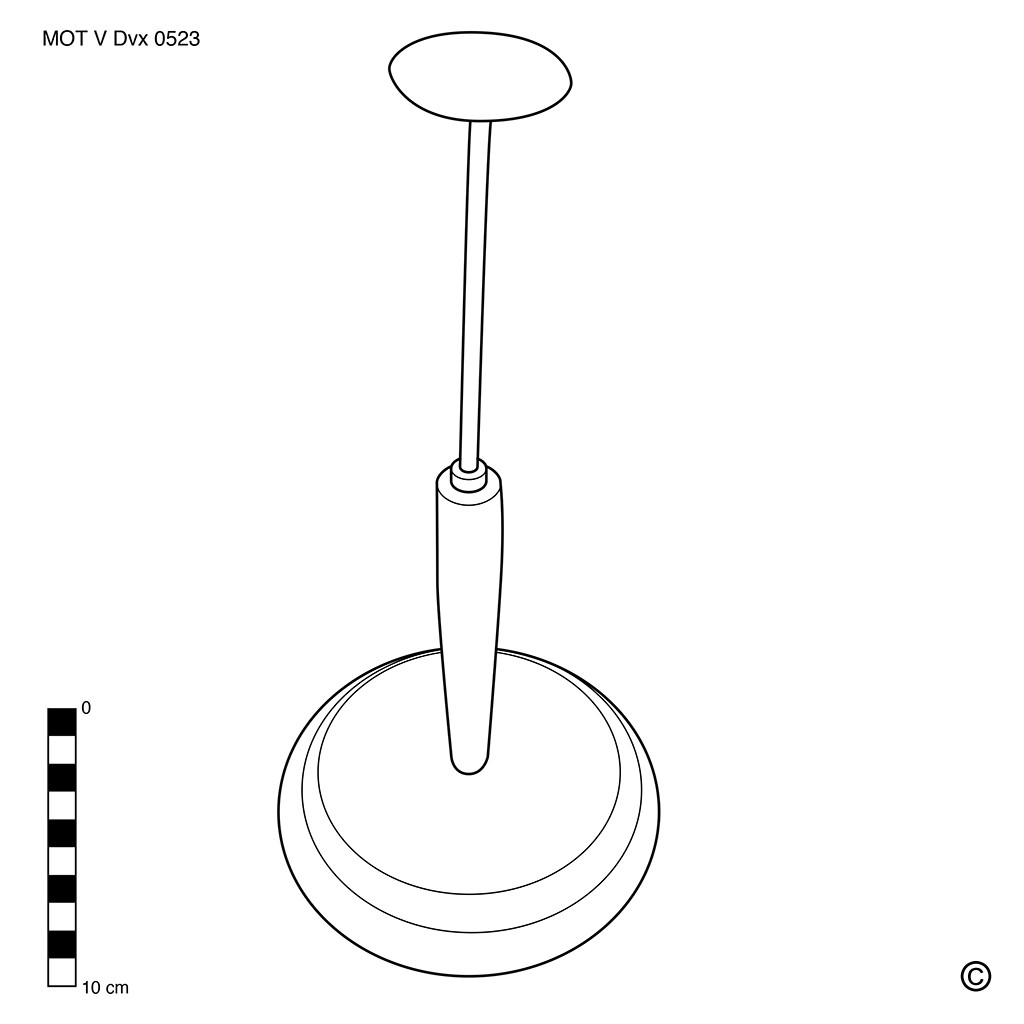
Ball iron (stand)/egg iron (stand)/mushroom iron
This text can only be consulted in Dutch
<https://www.mot.be/resource/Tool/ball-iron-standegg-iron-standmushroom-iron?lang=nl>
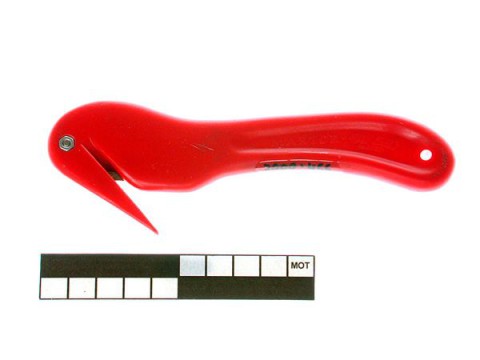
Band cutter
Stock managers use the band cutter to easily open film-sealed pallets. The
plastic handle is quite thin (approx. 1 cm) and bends inwards at the end.
The tip of the bent-in end is flat and pointed. The cutting part of the
band cutter is a sturdy razor blade (approx. 2 by 4 cm) that is
replaceable. It is securely clamped in the knife handle. The pointed tip of
the band cutter is hooked behind the plastic foil, then the cutter is
pulled in horizontal or vertical movement. This way plastic foils can be
cut with ease. [MOT]
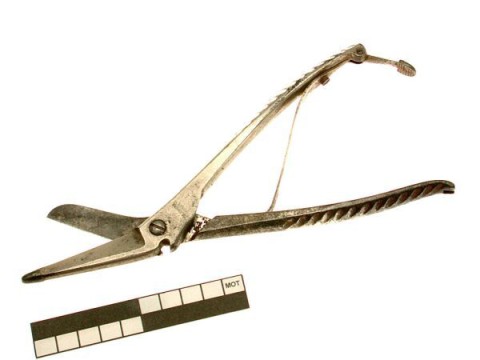
Bandage shears
With the bandage shears you can remove plaster or starch bandages. The
shears have one blade with a blunt conical end, which is inserted under the
bandage; in this way no injuries are caused. The bandage is cut lengthwise
and can then be removed. There are light and heavier models (approx.
150-400 g), which can be operated with one or two hands, depending on the
dressing to be removed. [MOT]
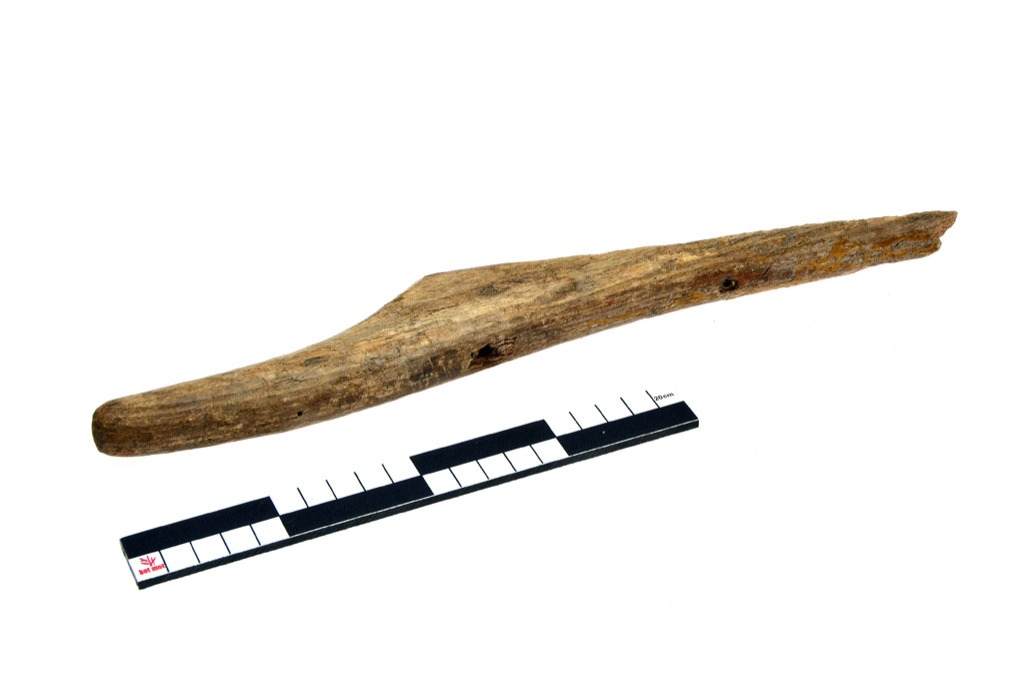
Barge pole
This text can only be consulted in Dutch
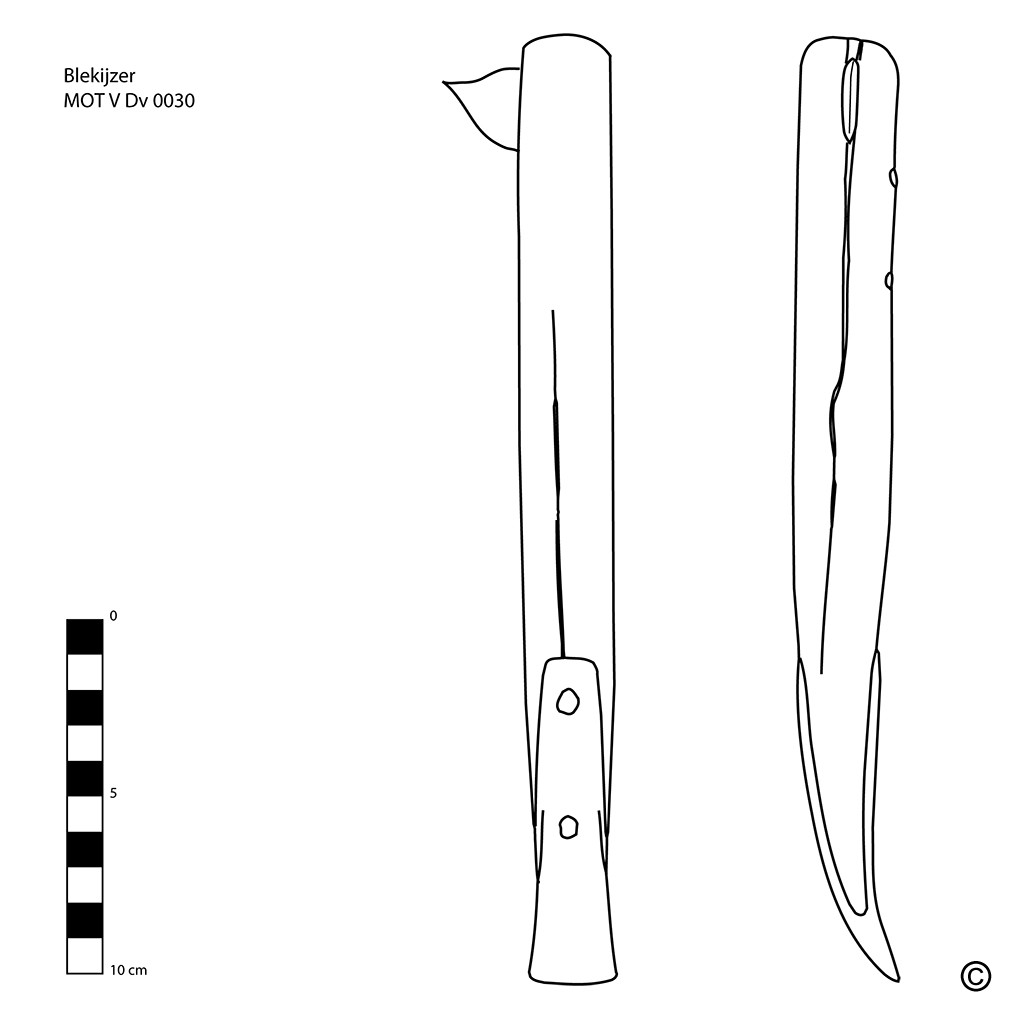
Barking iron
This text can only be consulted in Dutch
<https://www.mot.be/resource/Tool/barking-iron?lang=nl>
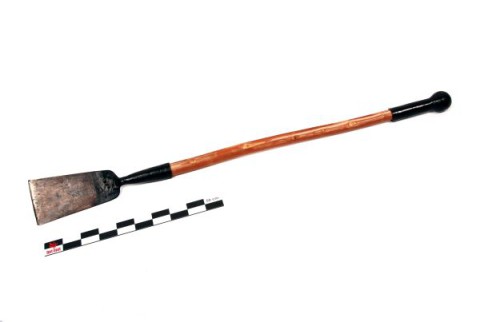
Barking shovel
The barking shovel serves to cut off some strips of bark and the twigs of
felled conifers. The tree is on the ground, the lumberman puts the cut on
the trunk, on the thick side, takes the handle or the globe in his right
hand, the shaft in his left and pushes the tool forward. The sphere makes
the tool heavier and provides a better grip. The shaft is about one meter
long. The barking shovel can be distinguished from the large barking iron
and the bill hook. The first has a blunt and much less broad blade. Its
handling is different: the barking shovel slides along the trunk, the
barking iron is pushed sideways between wood and bark. The bill hook has a
shorter and less broad blade on a much longer shaft. [MOT]
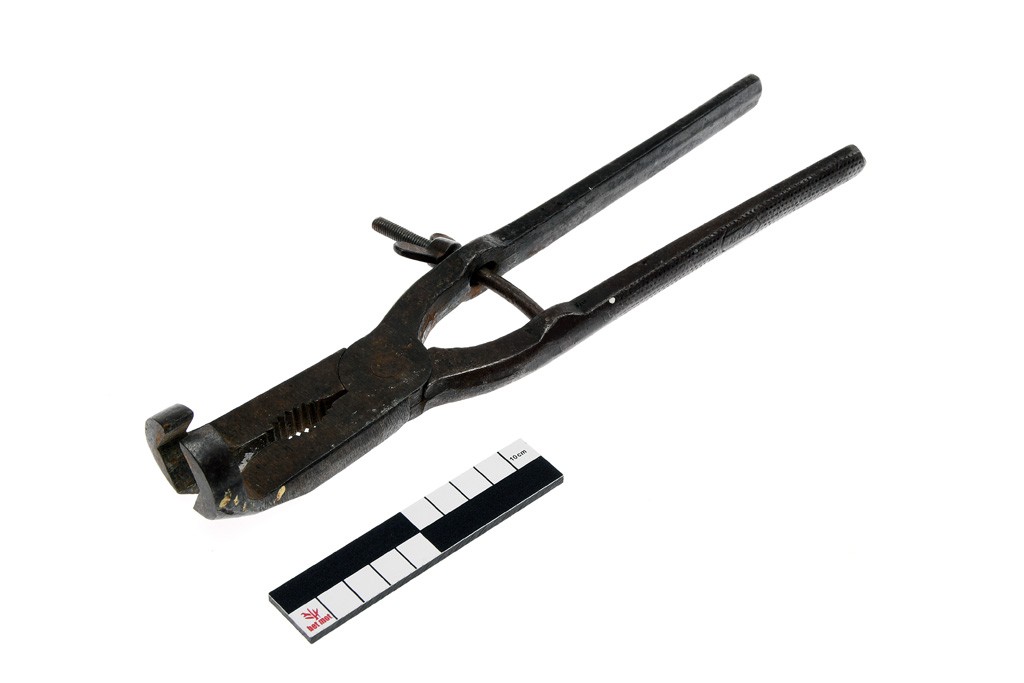
Basin pliers
This text can only be consulted in Dutch
<https://www.mot.be/resource/Tool/basin-pliers?lang=nl>
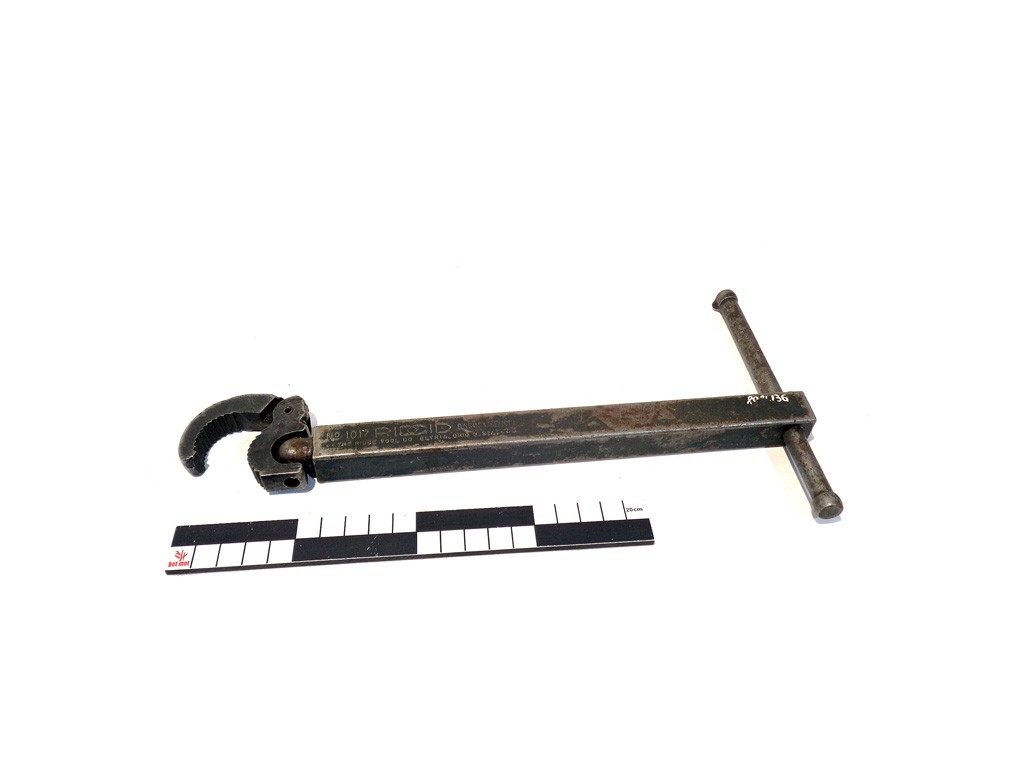
Basin wrench
This text can only be consulted in Dutch
<https://www.mot.be/resource/Tool/basin-wrench?lang=nl>
/mot-f-2204-0319.jpg)
Basket maker's bodkin
This text can only be consulted in Dutch
<https://www.mot.be/resource/Tool/priem-mandenmaker?lang=nl>
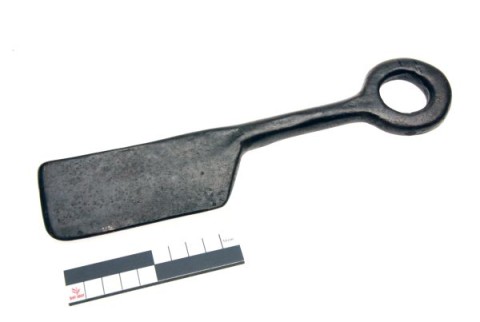
Basket maker's rapping iron
For more technical information on this hand tool of a basket maker, you can
visit the dutch version of this page. See also the commander of a basket
maker. [MOT]
